Ignacio Lopez-Gomez
Statistical Downscaling via High-Dimensional Distribution Matching with Generative Models
Dec 11, 2024Abstract:Statistical downscaling is a technique used in climate modeling to increase the resolution of climate simulations. High-resolution climate information is essential for various high-impact applications, including natural hazard risk assessment. However, simulating climate at high resolution is intractable. Thus, climate simulations are often conducted at a coarse scale and then downscaled to the desired resolution. Existing downscaling techniques are either simulation-based methods with high computational costs, or statistical approaches with limitations in accuracy or application specificity. We introduce Generative Bias Correction and Super-Resolution (GenBCSR), a two-stage probabilistic framework for statistical downscaling that overcomes the limitations of previous methods. GenBCSR employs two transformations to match high-dimensional distributions at different resolutions: (i) the first stage, bias correction, aligns the distributions at coarse scale, (ii) the second stage, statistical super-resolution, lifts the corrected coarse distribution by introducing fine-grained details. Each stage is instantiated by a state-of-the-art generative model, resulting in an efficient and effective computational pipeline for the well-studied distribution matching problem. By framing the downscaling problem as distribution matching, GenBCSR relaxes the constraints of supervised learning, which requires samples to be aligned. Despite not requiring such correspondence, we show that GenBCSR surpasses standard approaches in predictive accuracy of critical impact variables, particularly in predicting the tails (99% percentile) of composite indexes composed of interacting variables, achieving up to 4-5 folds of error reduction.
Dynamical-generative downscaling of climate model ensembles
Oct 02, 2024



Abstract:Regional high-resolution climate projections are crucial for many applications, such as agriculture, hydrology, and natural hazard risk assessment. Dynamical downscaling, the state-of-the-art method to produce localized future climate information, involves running a regional climate model (RCM) driven by an Earth System Model (ESM), but it is too computationally expensive to apply to large climate projection ensembles. We propose a novel approach combining dynamical downscaling with generative artificial intelligence to reduce the cost and improve the uncertainty estimates of downscaled climate projections. In our framework, an RCM dynamically downscales ESM output to an intermediate resolution, followed by a generative diffusion model that further refines the resolution to the target scale. This approach leverages the generalizability of physics-based models and the sampling efficiency of diffusion models, enabling the downscaling of large multi-model ensembles. We evaluate our method against dynamically-downscaled climate projections from the CMIP6 ensemble. Our results demonstrate its ability to provide more accurate uncertainty bounds on future regional climate than alternatives such as dynamical downscaling of smaller ensembles, or traditional empirical statistical downscaling methods. We also show that dynamical-generative downscaling results in significantly lower errors than bias correction and spatial disaggregation (BCSD), and captures more accurately the spectra and multivariate correlations of meteorological fields. These characteristics make the dynamical-generative framework a flexible, accurate, and efficient way to downscale large ensembles of climate projections, currently out of reach for pure dynamical downscaling.
A probabilistic framework for learning non-intrusive corrections to long-time climate simulations from short-time training data
Aug 02, 2024Abstract:Chaotic systems, such as turbulent flows, are ubiquitous in science and engineering. However, their study remains a challenge due to the large range scales, and the strong interaction with other, often not fully understood, physics. As a consequence, the spatiotemporal resolution required for accurate simulation of these systems is typically computationally infeasible, particularly for applications of long-term risk assessment, such as the quantification of extreme weather risk due to climate change. While data-driven modeling offers some promise of alleviating these obstacles, the scarcity of high-quality simulations results in limited available data to train such models, which is often compounded by the lack of stability for long-horizon simulations. As such, the computational, algorithmic, and data restrictions generally imply that the probability of rare extreme events is not accurately captured. In this work we present a general strategy for training neural network models to non-intrusively correct under-resolved long-time simulations of chaotic systems. The approach is based on training a post-processing correction operator on under-resolved simulations nudged towards a high-fidelity reference. This enables us to learn the dynamics of the underlying system directly, which allows us to use very little training data, even when the statistics thereof are far from converged. Additionally, through the use of probabilistic network architectures we are able to leverage the uncertainty due to the limited training data to further improve extrapolation capabilities. We apply our framework to severely under-resolved simulations of quasi-geostrophic flow and demonstrate its ability to accurately predict the anisotropic statistics over time horizons more than 30 times longer than the data seen in training.
SEEDS: Emulation of Weather Forecast Ensembles with Diffusion Models
Jun 24, 2023

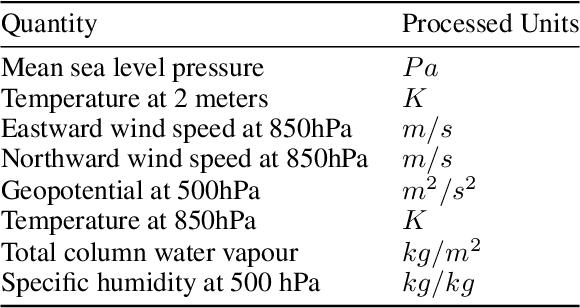

Abstract:Probabilistic forecasting is crucial to decision-making under uncertainty about future weather. The dominant approach is to use an ensemble of forecasts to represent and quantify uncertainty in operational numerical weather prediction. However, generating ensembles is computationally costly. In this paper, we propose to generate ensemble forecasts at scale by leveraging recent advances in generative artificial intelligence. Our approach learns a data-driven probabilistic diffusion model from the 5-member ensemble GEFS reforecast dataset. The model can then be sampled efficiently to produce realistic weather forecasts, conditioned on a few members of the operational GEFS forecasting system. The generated ensembles have similar predictive skill as the full GEFS 31-member ensemble, evaluated against ERA5 reanalysis, and emulate well the statistics of large physics-based ensembles. We also apply the same methodology to developing a diffusion model for generative post-processing: the model directly learns to correct biases present in the emulated forecasting system by leveraging reanalysis data as labels during training. Ensembles from this generative post-processing model show greater reliability and accuracy, particularly in extreme event classification. In general, they are more reliable and forecast the probability of extreme weather more accurately than the GEFS operational ensemble. Our models achieve these results at less than 1/10th of the computational cost incurred by the operational GEFS system.
Global Extreme Heat Forecasting Using Neural Weather Models
May 23, 2022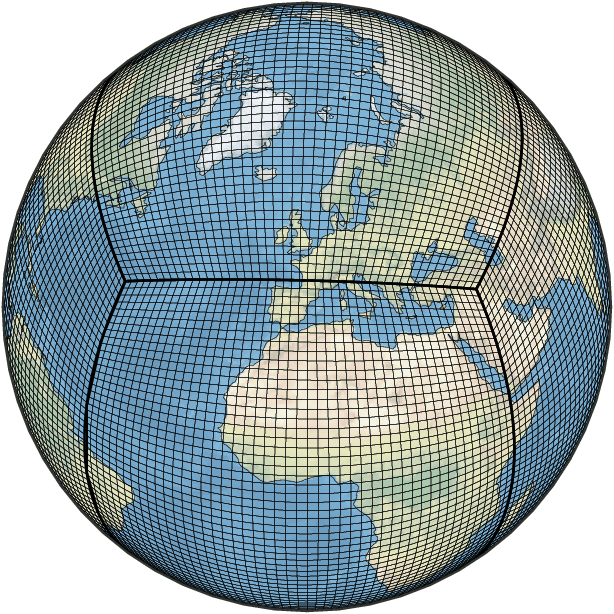
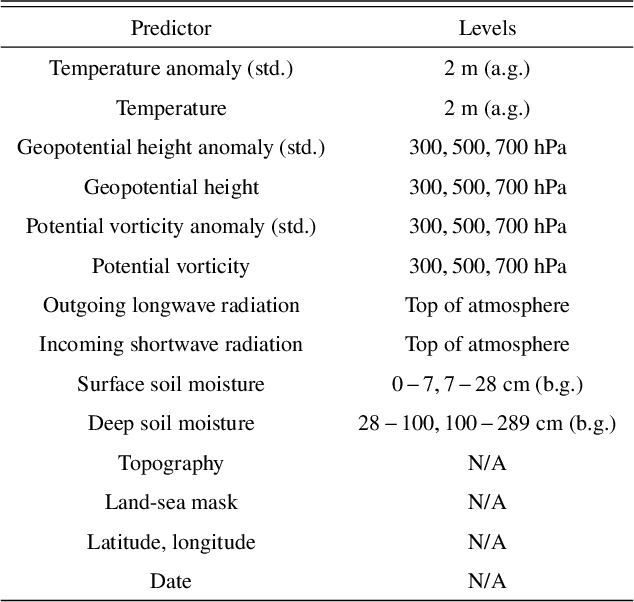
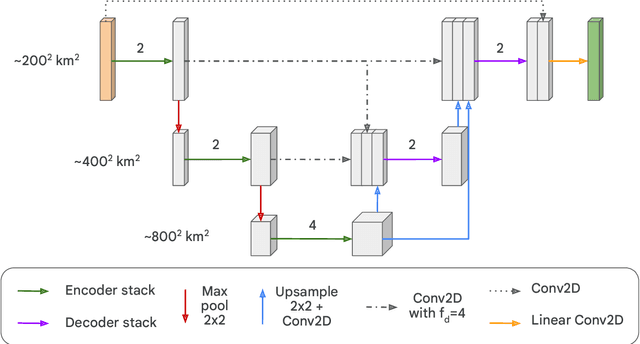
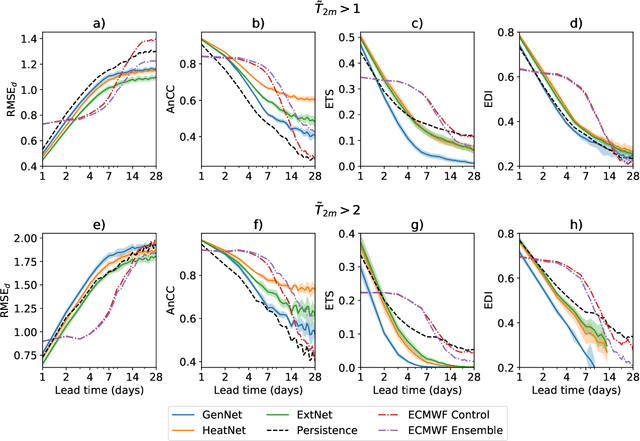
Abstract:Heat waves are projected to increase in frequency and severity with global warming. Improved warning systems would help reduce the associated loss of lives, wildfires, power disruptions, and reduction in crop yields. In this work, we explore the potential for deep learning systems trained on historical data to forecast extreme heat on short, medium and subseasonal timescales. To this purpose, we train a set of neural weather models (NWMs) with convolutional architectures to forecast surface temperature anomalies globally, 1 to 28 days ahead, at $\sim200~\mathrm{km}$ resolution and on the cubed sphere. The NWMs are trained using the ERA5 reanalysis product and a set of candidate loss functions, including the mean squared error and exponential losses targeting extremes. We find that training models to minimize custom losses tailored to emphasize extremes leads to significant skill improvements in the heat wave prediction task, compared to NWMs trained on the mean squared error loss. This improvement is accomplished with almost no skill reduction in the general temperature prediction task, and it can be efficiently realized through transfer learning, by re-training NWMs with the custom losses for a few epochs. In addition, we find that the use of a symmetric exponential loss reduces the smoothing of NWM forecasts with lead time. Our best NWM is able to outperform persistence in a regressive sense for all lead times and temperature anomaly thresholds considered, and shows positive regressive skill compared to the ECMWF subseasonal-to-seasonal control forecast within the first two forecast days and after two weeks.
 Add to Chrome
Add to Chrome Add to Firefox
Add to Firefox Add to Edge
Add to Edge